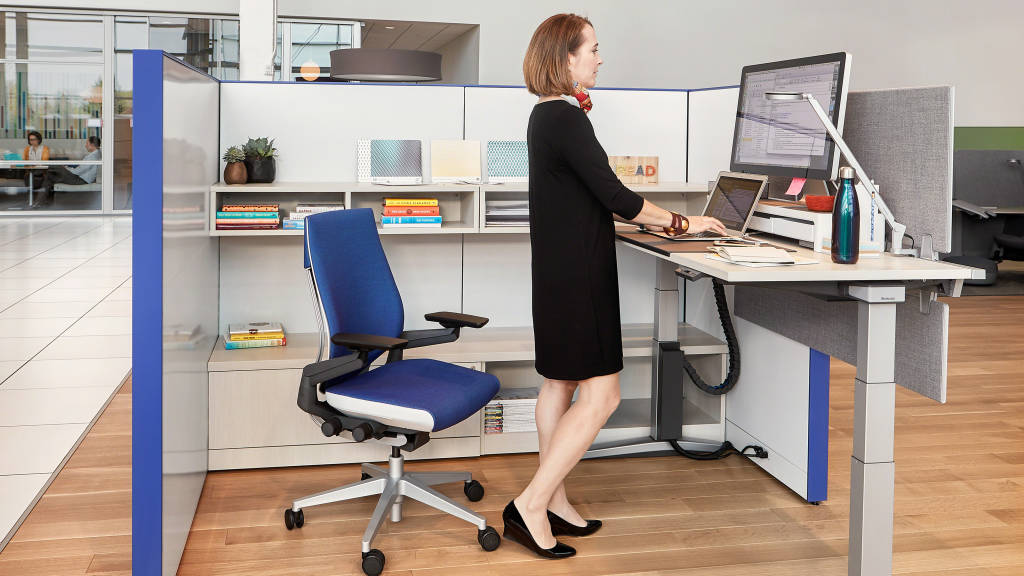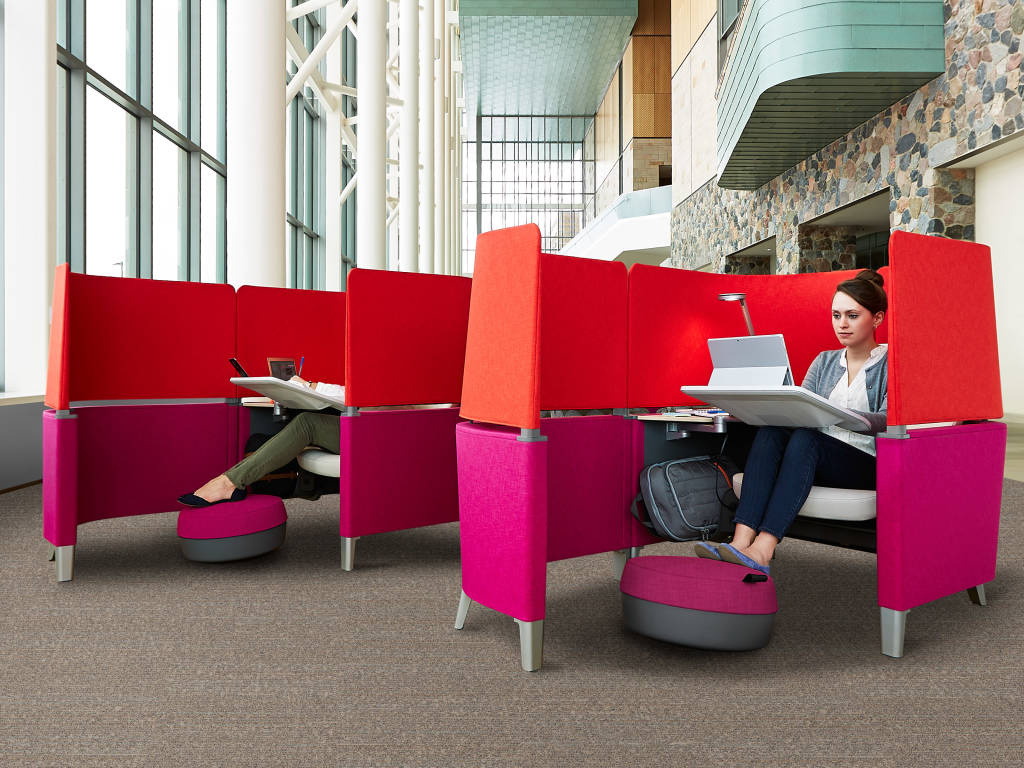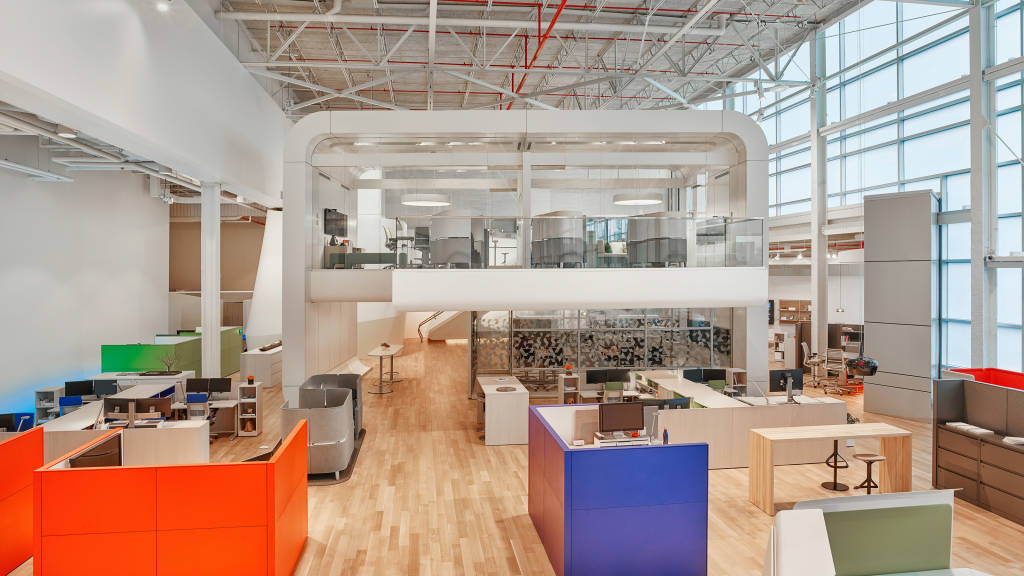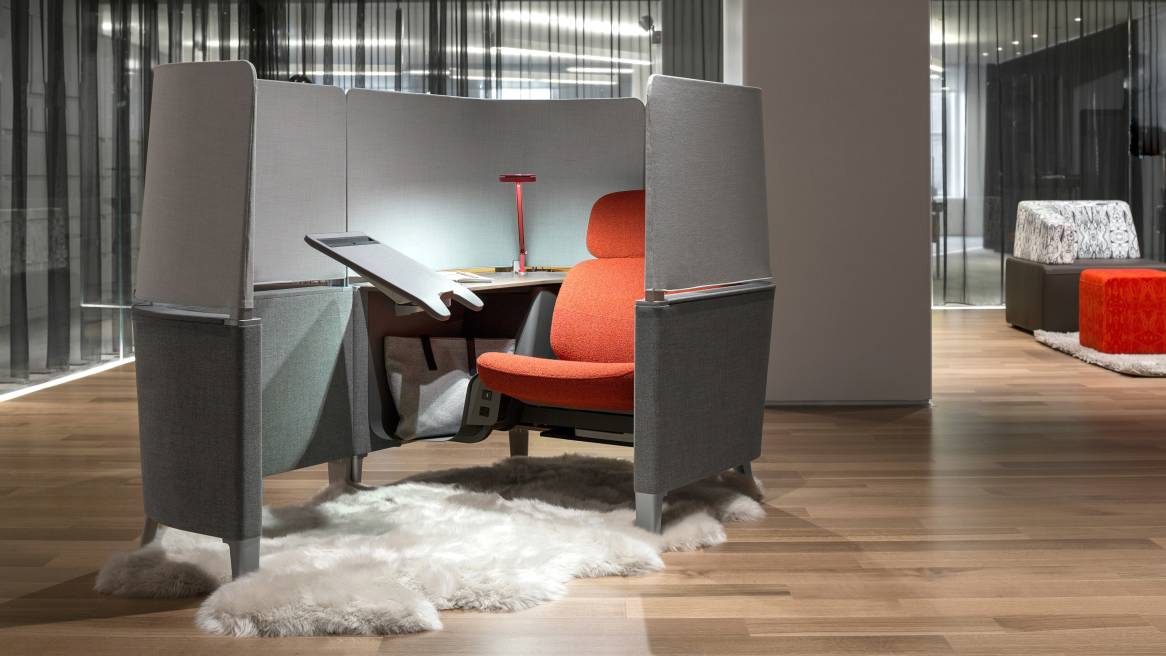3 Ways Your Office Can Support Your Need for Privacy
Three design strategies for supporting privacy in the workplace give choice and control back to workers.
Merriam-Webster defines privacy in two ways; the quality or state of being apart from company or observation and freedom from unauthorized intrusion. Even for those whose job it is to define the term, privacy has a variety of meanings. While it can refer to solitude or isolation, it can also relate to stimulation control.
In many cases, solitude at work is slipping away and stimulation control around the office feels elusive. Research is mounting that privacy is an issue of concern in workplaces around the world. A Steelcase study of workers across the globe confirms that employees do not feel they have enough privacy at work. The survey shows that being able to concentrate, work in teams without being interrupted or choosing where to work based on the task are needs often going unmet.
Listen to the Podcast
https://soundcloud.com/steelcase/360-real-time-the-privacy-crisis-design-strategies-with-privacy-in-mind
Studies show people are seeking privacy in a variety of ways and there are solutions workplaces can offer to support these needs. The global design team at Steelcase suggests creating an ecosystem of spaces. A variety of areas to work in gives the choice and control of where and how to get the job done back to workers. This can be achieved with a new space or reimagining and repurposing an existing area.
Vanessa Bradley, Steelcase manager of Advanced Applications Design, describes the distributed and zone methods for increasing privacy at work.
Distributed and Zone Privacy Methods
The distributed method is all about finding places for you to “get away” within the context of the current space. Elements such as privacy screens or small enclaves can help you regain a sense of privacy without being physically removed from the existing space.
The zone method takes a space that’s underused or unused and converts it into a place that supports privacy. The space becomes a destination where people can go to seek out a more private experience.
Privacy is personal and dependent upon what your needs are. Bradley says a supportive range of spaces will include fully open areas, somewhat shielded spaces and fully closed spaces.
There are three things designers should think about to offer the privacy workers crave, according to Bradley.
3 Design Strategies to Support Privacy
1) Enable people to be their personal best

Give people the ability to walk into a setting and control certain elements within the space. An example could be dimming the light, changing the temperature or controlling if they sit or stand while working.
2) Create tailored experiences that support rejuvenation and focus

Curate a setting for a certain experience and be specific to nurture that experience around focus and rejuvenation.
3) Plan with balance in mind

Look at the entire environment and determine how to use privacy settings to bolster it. Adding to the environment can support it in a more complete way. It’s important to consider privacy needs that are planned and unplanned and provide balance.
In the end, “It’s really about nurturing the individual. Giving them choice and control over how they work and creating the right ecosystem in your workplace in order to do that,” says Bradley.
A number of factors have led to privacy feeling like a crisis in many offices around the world. To better understand what led us here, read our interview with Donna Flynn, Steelcase director of WorkSpace Futures, and listen to her podcast. We also explored the topic of privacy more in-depth with an interview and podcast with Melanie Redman, Steelcase WorkSpace Futures senior design researcher, who describes five key strategies people can use to seek out privacy at work.


